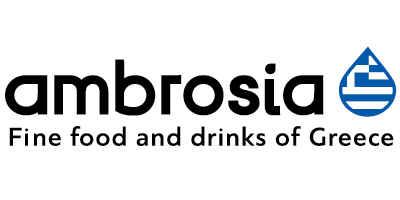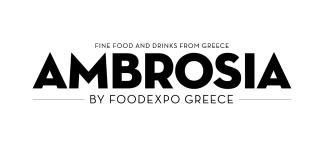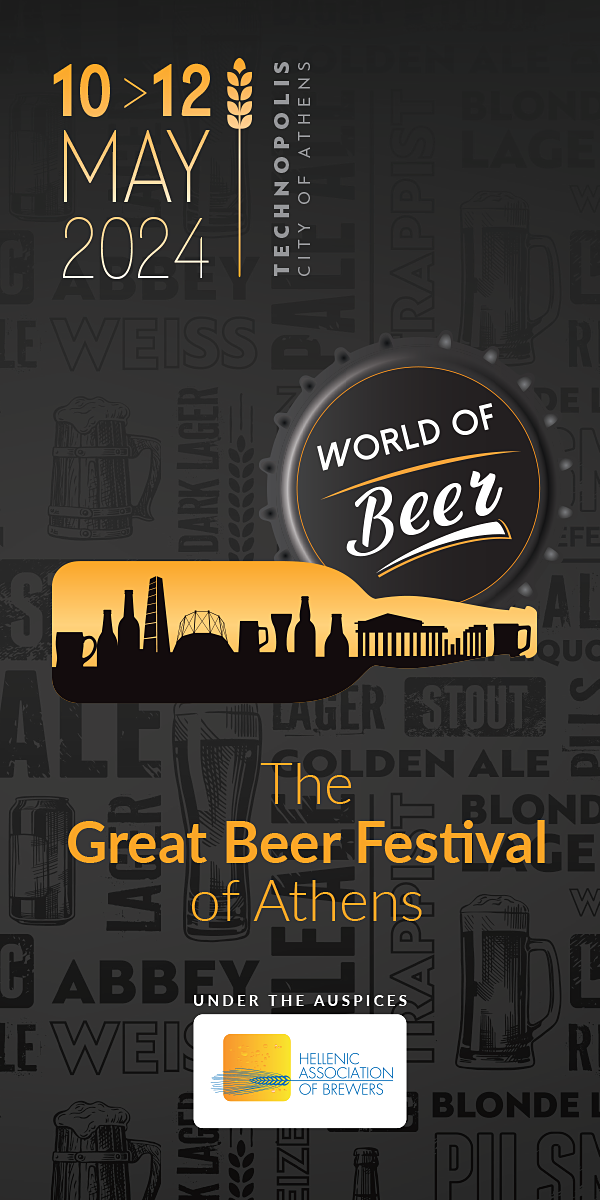Midway between Europe and the East, with important ports overseeing the Black Sea, Romania is a country with a great tradition and an even brighter future ahead. The country’s consumers are tech savvy, making extensive use of the Internet, and are very familiar with the Greek F&B products both because of the cultural proximity and their approach as tourists. As for the country itself, Greek companies and entrepreneurs have one of the highest foreign direct investment rates (more than 8,400 established Greek-owned companies), which makes Romania a very attractive exports destination for Greek brands and companies in every field, namely and foremostly the Food & Beverage sector. Mr. Pantelis Giannoulis, First Counsellor, Head of Office for Economic & Commercial Affairs in Bucharest of the Greek Embassy in Romania gives us a comprehensive insight on the 2023 Romanian market.
Interview: Charitomeni Vonta
Please tell us a few things about the country’s economic status and indices.
The Romanian economy in 2022, despite the many challenges it faced (pandemic crisis, war in Ukraine, energy crisis), continued its upward trend, with a good performance. According to data published by the Romanian National Institute of Statistics (INS), the estimated Gross Domestic Product (GDP) for 2022 amounted to 1,412.457 billion lei at current prices (about 287 billion euros), an increase – in real terms – of 4.8% compared to 2021.
At the same time, in 2022, r/exports amounted to 92 billion euros (up 23.1% compared to 2021) and imports amounted to 126 billion euros (+28.1%). The trade deficit was 34 billion euros, which is 10 billion euros more than in 2021 (+44%).
Important sectors and pillars of the Romanian economy are: Industry (i.e. petroleum-chemicals-refineries-automotive-pharmaceuticals), Agriculture (mainly cereals, vegetables, wine and livestock products), Services (i.e. Financial), Technology/IT/E-Trade, Real estate, Logistics and transport services.
What is the status of the bilateral economic relations between Greece and Romania?
Romania is one of the most characteristic examples of successful Greek business extroversion, as it combines a large and continuously increasing export volume (2022 export volume of 1.8 billion Euros, 10th greek exports destination), a high level of Greek investment (EUR 1,5 billion, 8th largest investing country), and large number of established Greek-owned companies (more than 8,400 companies).
Generally speaking about the foreign direct investment in the country, there was an increase by 33.37% in 2022, to 10.7 billion euros, compared to 8 billion euros in 2021, while the total FDI Stock reached around 110 billion euros at the end of 2022. The most important sectors attracting foreign investment in Romania are the automotive industry and automotive parts, banking and financial, IT, Telecommunications, Hospitality, Heavy industry, Consumer goods and Retail.
As mentioned above, the Greek FDI Stock is amounted at EUR 1,5 billion, placing Greece as the 8th largest investing country in Romania. At the same time, in the National Commercial Register of Romania until December 2022, the number of Greek companies was 8,398.
Where does Greece stand in terms of exports to Romania and what are the exports of F&B products in the country?
According to the Hellenic Statistical Authority data and as regards the top 10 countries of destination of Greek exports for 2022, Romania was at the 10th position of the main destinations of Greek exports, remaining in the top 10 for the third consecutive year (10th in 2020, 8th in 2021, 10th in 2022).
As regards the overall bilateral trade balance between Greece and Romania, exports/imports to/from Romania in 2022, the following results are obtained:
a. The volume of the bilateral trade balance in 2022 reached a record high of EUR 2,849.6 million (compared to EUR 2,250.7 million in 2021), showing an increase of EUR 598.9 million or 26.6%.
b. Greek Exports to Romania. First, it is noted that Greek exports to Romania have been growing steadily over the past 10 years, while in 2022 reached a record high of 1,823.4 million euros (compared to 1,389.8 million euros in 2021), showing an increase of 31.2%.
In more detail: Value of Exports (in thousands of Euros): 2013 618,1 / 2014 654,1 / 2015 729,9 / 2016 769,1 / 2017 875,0 / 2018 969,6 / 2019 1.044,8 / 2020 1.124,4 / 2021 1.389,8 / 2022 1.823,4.
The analysis of the Greek exports structure, shows that the main volume (the top 20 exported products, with a total value of €1 billion or 56% of the total) is mainly : Construction Products – Iron wire, Iron bars, Copper wire, Aluminium plates and strips, Aluminium bars, Petroleum Products – Petroleum gases, Petroleum coke, Chemical Products – Fertilizers, Plastics Industry Products – Styrene polymers, Ethylene polymers, Propylene polymers, Plates-sheets-films-films-strips of plastics, Computers, Children’s Toys, Fresh Fruit (Citrus, Apricots-Peaches, Strawberries-Kiwis, Bananas) and preserved Olives.
Total Greek exports to Romania were €1.124,4M in 2020, €1.389,8M in 2021 and €1.823,4M in 2022, while F&B Products exports were €270M (accounting for 24%), €288,9M (accounting for 20,8%) and €339,1M (accounting for 18,6%) respectively.
We notice that the Exports of GR F&B Products are increasing every year, reaching 339 mil. Euros in 2022, while their percentage in total GR Exports reach almost 19%.
For someone who is interested in entering the Romanian market, could you please share with us some facts about the the said country’s FMCG market?
According to recently released data from NielsenIQ Retail Audit, consumer goods/FMCG sales in Romania increased in the second quarter of this year by 17.3% in value terms compared to the same period last year. At the same time, the second quarter of the year was also characterized by a slowdown in the volume decline that characterized the last quarters (-2% in Q2 2023, compared to -4.6% in Q1 2023), as well as a slowdown in price growth (+19.3% in Q2 2023, compared to +23.1% in Q1 2023).
According to the press release, the consumer goods market at European level has evolved similarly to that of Romania over the last twelve months. With an average European value growth of +9.2%, volumes decreased by -2.3% and prices increased by +11.5%. Compared to the Eastern European countries, Romania ranks fourth in terms of value growth (+18.3%) over the last twelve months, after Hungary, with an increase of +22.%, Serbia (+19.5%) and Bulgaria (+19.3%).
All macro product categories recorded a significant increase in value in the first half of the year. The largest increase was recorded in the food category (+19.7%), which accounts for more than half of the total shopping basket in the Romanian consumer goods market, followed by the non-alcoholic beverages category, which recorded a 17.5% increase in value. Non-food products increased in value by 16.6% and alcoholic beverages by 12.3%.
More than three quarters of product categories increased in value in the first half of the year, while only 32% of them managed to increase in volume. The top categories that rose more than 10% in value were beer, carbonated drinks, fresh meat, water, cheese, coffee, snacks, chocolate, biscuits, dairy products, vegetables, bread, household products and spirits, but none of these increased in volume.
The innovation of the second quarter of the year is the change in consumer patterns in Hypermarkets and Supermarkets, which shows the trend of consumers making more frequent visits to stores in an effort to keep the value of the shopping basket under control.
FMCG e-commerce tracked by NIQ recorded a significant increase in value in the second quarter of the year, up 20.4%. Non-food products, up 25.5%, and food products, up +14.1% in value, took the largest share of monitored online trade.
Finally, it is noted with regard to the macroeconomic indicators, that at this stage, inflation on September 2023 was at 8,8% on an annual basis (compared to 15% in December 2022), the Central Bank’s key lending rate is at 7%, the Euro/RON exchange rate at 1 Euro = 4.94 RON, GDP growth is estimated at 1,8% for 2023, unemployment at 5.4%, while as regards VAT, the general VAT is at 19% while for food and beverages it is reduced to 9%.
What would you say is the greatest asset of Greek F&B products in Romanian market?
The first and most important asset is the recognition of the Greek brand, mainly due to the many Greek businesses that have been established and operate in Romania, but also due to the fact that more than 1.3 million Romanian tourists visit Greece every year and have the opportunity to taste Greek drinks and food, gaining the best impressions, and in their return they are looking to find them in the Romanian market.
Τhe second advantage is the geographic proximity and because of this the use of the same ingredients and the same preparation of food dishes, meaning that in both Romanian and Greek cuisines there are a lot of similarities i.e. common products like cheese, yoghurt, meat, fish, fruits, dried fruits, chocolate, wine, beer, tea, jams and compotes or food dishes like, Rissoles/fried meatballs are similar to Keftedakia, Sarmale/Cabbage rolls are similar to Lahanodolmades, “Mici” or “Mititei”/Grilled sausages, Tripe soup/Similar to Patsa soup, Zacusca/Eggplant pasta/Similar to Melitzanosalata, Pickles, Cozonac/Sweetbread/Similar to Tsoureki etc.
Romania at a glance
- Romania is located in the region of South-Eastern Europe, bordered by the Black Sea and by Bulgaria, Ukraine, Moldova, Hungary and Serbia.
- It has an area of 238,391 sq km (9th in size among the EU Member States) and a population of 19.053 million inhabitants. Τhe majority of the population are urban residents (9.941 million or 52.2%).
- As of 01.01.2007 Romania is a member of the European Union, but not a member of the Eurozone – the national currency is the Leu, with an exchange rate of 1 Euro = approximately 4.90 Lei-.
- The country’s capital and commercial centre is Bucharest (population with the greater Ilfov region, 2.2 million inhabitants).
- Other economically important cities (with a population of between 250,000-350,000 inhabitants), are Iasi, Cluj-Napoca, Timisoara, Krajowa, Brasov, Constanta and Galati.
The Particularities of the Romanian Cuisine
The cuisine is influenced by repeated waves of different cultures: the ancient Greeks, with whom Romanians traded, the Romans, who gave the country its name; the Saxons, who settled in southern Transylvania, the Turks, who for centuries dominated Romania, as well as Slavic and Magyar neighbors. All of these influences gradually blended into the varied and delicious Romanian culinary tradition. From Roman times there still exists the simple pie called plăcintă, the Turks have brought meat balls (mititei – fried meatballs or perişoare in a meatballs soup), from the Greeks there is the musaca, from the Bulgarians there are a wide variety of vegetable dishes like zacusca, from the Austrians there is the Schnitzel and the list could continue.
Romanian cuisine can be defined as integer, but if we analyze food structure in terms of varieties, method of cooking, seasoning, and in terms of structure and association between various raw matters, then we observe that there are regional particularities. Romanian cuisine can be divided based on regional differences (Moldavia, Bucovina, Muntenia, Dobrogea, Transylvania, etc.). Every historical region of Romania has its own specific in culture and customs, reflected in the folk music, the architecture of the houses, the traditional costumes and, of course, in local cuisine.
(Source: Journal of Agroalimentary Processes and Technologies/ Romanian Cuisine: Culinary Habits and Local Produce /Liana-Claudia Salanţă, Adriana Păucean*, Maria Tofană, Simona Man, Carmen Pop)


















 Mr. Pantelis Giannoulis, First Counsellor, Head of Office for Economic & Commercial Affairs in Bucharest of the Greek Embassy in Romania
Mr. Pantelis Giannoulis, First Counsellor, Head of Office for Economic & Commercial Affairs in Bucharest of the Greek Embassy in Romania 
